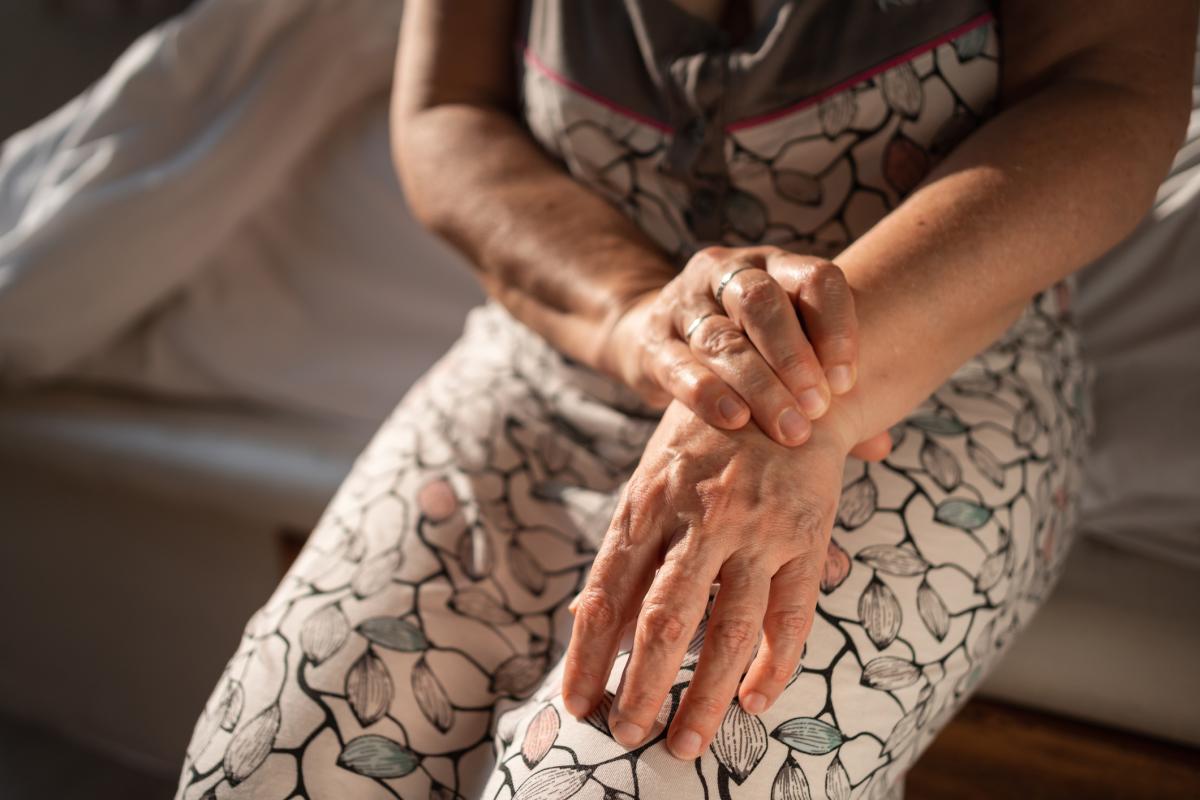Early diagnosis combined with new treatments for rheumatoid arthritis contribute to significant advances in disease control

Rheumatoid arthritis is no longer your mother’s disease. For many years, the disease was associated with painful and crippling deformities to the hands and other joints. But today with early diagnosis and treatment, that is rarely the case.
“Over the last 20 years, we have made tremendous advances in the early diagnosis and treatment of this disease,” says James O’Dell, MD, a rheumatologist at Nebraska Medicine who has played a significant role in pioneering new and better treatment modalities for rheumatoid arthritis that have become the standard nationally and worldwide.
Dr. O’Dell is division chief for the Division of Rheumatology and Immunology at the University of Nebraska Medical Center (UNMC) and the Bruce Professor of Internal Medicine. He has authored many articles on treatment standards for rheumatoid arthritis in medical textbooks that are used by doctors nationally and worldwide. as well as three pivotal articles that have been published in the New England Journal of Medicine.

While rheumatoid arthritis affects just one percent of the population, it is one of the most serious forms of arthritis. The disease affects not only the joints, but can attack the entire body and become severely debilitating. Once joint damage occurs, it is permanent.
The last 20 years, however, have produced medical advances that have dramatically changed the outcomes for many patients with rheumatoid arthritis. “Many patients now have the same life expectancy as the average person,” says Dr. O’Dell.
The Rheumatoid Arthritis Investigational Network, (RAIN), which was founded in 1989 by Dr. O’Dell to find new and better ways to treat the disease, has been a leading catalyst for these advances. Based at UNMC, the network includes approximately 50 rheumatologists and nurse-study coordinators located throughout Nebraska, North Dakota, South Dakota, Colorado, Minnesota, Pennsylvania and California that collaborate on clinical research. The group consists of faculty members from UNMC including Dr. O’Dell, Ted Mikuls, MD; Amy Cannella, MD; Alan Erickson, MD; Michael Feely, MD; Gerald Moore, MD; Lynell Klassen, MD; Tina Mahajan, MD; and Marcus Snow, MD; as well as Geoffrey Thiele, PhD; and Kaleb Michaud, PhD.
Two of the most important advancements include the development of the anti-CCP antibody test to detect rheumatoid arthritis in its earliest stages and disease-modifying antirheumatic drugs (DMARDs) that can halt the progression of the disease. “If the anti-CCP test comes out positive, it is highly likely that active rheumatoid arthritis is present,” says Dr. O’Dell. “This test, combined with clinical findings and historical points can confirm a diagnosis.”
“Treatment within three months of onset of the disease can have a significant impact in preventing damage and destruction to the joints,” notes Dr. O’Dell. “Joint damage occurs early in the course of rheumatoid arthritis, often before patients begin developing symptoms. Ideally, that’s when we’d like to be able to diagnose the disease and begin treatment.”
Once a diagnosis is confirmed, it is in the patient’s best interest to be referred to a rheumatologist to develop a treatment plan because of the complexity of treatment, notes Dr. O’Dell. There are approximately 20 DMARDS that are used in treatment and most patients require a combination of these that are customized for each patient.
Safe administration of DMARDs requires critical and careful monitoring, cautions Dr. O’Dell, which may include complete blood counts (CBCs), serum albumin and aminotransferase levels every four to 12 weeks. “More than 80 percent of patients will have excellent results if they are put on the right treatment regimen and they are monitored closely,” says Dr. O’Dell.
Dr. O’Dell says they are also looking at indicators that would allow doctors to diagnose the disease even before the patient knows he or she has the disease. For many patients, it can take up to five years from the time the disease begins to break down the immune system to when they actually begin to experience physical symptoms of the disease.
“As we understand more about the biology of rheumatoid arthritis and the pathways the disease takes to cause the inflammatory process, we hope to make progress in developing drugs that target and interrupt these pathways,” says Dr. O’Dell.




